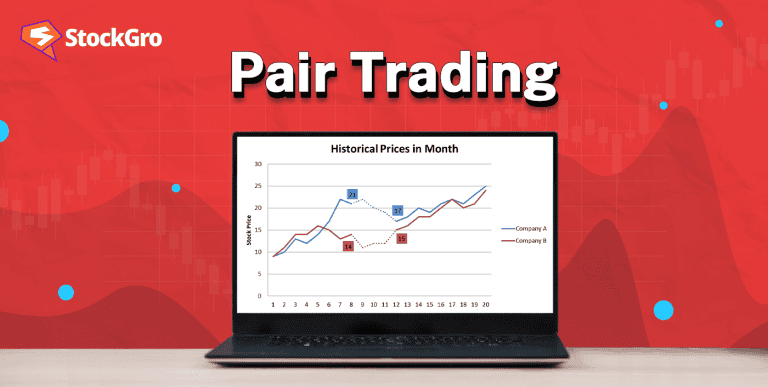
Earnings sessions are crucial for speculators because companies provide quarterly financial reports with crucial financial performance data. As investors react to whether companies meet, exceed, or fail expectations, stock market volatility often results. Trading during volatility can be rewarding for those who are prepared.
Earnings reports significantly affect stock prices. Rapid price increases are frequently the result of positive earnings shocks, while abrupt sell-offs can occur in response to negative results. This offers traders possibilities and risks. By examining this information, traders can capitalise on price changes and predict market movements, regardless of market reaction.
This article will cover the most effective earnings session trading methods for speculators. These strategies help traders manage risk, navigate volatility, and make informed trading decisions during pre- and post-earnings.
Understanding earnings session
During earnings sessions, publicly traded firms typically submit their quarterly financial reports four times each financial year. These reports let investors and speculators analyse the financial health of a firm by presenting sales, earnings per share, and future guidance. Companies report their previous quarter results during earnings sessions, usually in March, June, September, and December.
Stock prices vary frequently after earnings announcements as investors modify their holdings. A company’s stock price may decrease if it misses earnings predictions but rise if it exceeds them. This creates a fast-paced atmosphere for speculators, with chances and hazards.
Speculators need earnings-induced market movements. Whether one predicts or reacts to earnings, earnings season offers unique profit potential. Traders who understand market patterns and strategic trading can make informed judgments to maximise rewards and minimise risk during this period.
Also learn about: How to build wealth with asset allocation strategies?
Pre-earnings trading strategy
- Examine the earnings estimates and consensus forecasts: Traders use these estimates to predict market movements and gain insight into company performance.
- Identify stocks likely to move: projections help traders identify shares that may experience significant movements during earnings sessions/
- Monitor industry trends and performance: By comparing a company’s outcomes to those of its competitors, one can determine its strengths and weaknesses.
- Examining historical earnings reports: By evaluating previous reports, traders can improve their trading methods by learning more about a stock’s normal reaction to various earnings results.
- Identify risks: Even if the company outperformance expectations, price changes may occur due to unanticipated outcomes or market sentiment shifts. Pre-earnings trading requires precise risk management.
Post-earnings trading strategy
In response to the published earning report, stock prices frequently witness substantial fluctuation contingent upon the company’s performance in comparison to expectations. A company’s earnings surprise, which occurs when it surpasses analyst expectations, frequently induces substantial price increases as traders and investors respond to the results that were more robust than anticipated.
Conversely, market participants may experience rapid sell-offs as they recalibrate to the weakened outlook following a negative surprise or earnings miss. Nevertheless, post-earnings reactions are not always straightforward, necessitating that traders examine not only the earnings figures but also the broader market sentiment and stock valuation.
After an earnings surprise, a company’s stock should be bought, held, or sold based on its fundamentals and the unexpected market performance. If market expectations have been set, a positive earnings report from a high-valued company may not give much upside.
However, an inexpensive stock with solid earnings might generate high returns, making it a potentially better investment. A negative surprise from a smaller firm may be a red flag to sell. To make good earnings session judgments, traders must closely consider these variables.
Additionally, the earnings report must be viewed in context. Management’s commentary and forward projections provide valuable insights into the company’s future together with sales and earnings per share (EPS) . A company may report good earnings, but it may also predict supply chain issues or market uncertainty that could dampen or even hurt market reactions.
Traders who overlook these signs risk misinterpreting the market’s response. As a result, for post-earnings trading to be effective in the stock market, a thorough study of both present performance and prospects is required. This guarantees that judgments are based on the whole picture rather than just the immediate data.
Volatility and risk management
During earnings sessions, market volatility rises as companies disclose results that meet, surpass, or fall short of expectations, causing share price changes. The unpredictability of these changes raises the risk, notwithstanding the possibility of profit for speculators. A disciplined strategy is essential for managing losses and volatility.
The following strategies can help traders manage risk during volatility:
- Stop-loss orders: These orders are intended to help traders reduce the possible losses caused by unexpected market movements by automatically selling stocks when they reach a predetermined price.
- Options trading: To hedge against the dangers of unanticipated stock changes during earnings season, apply straddles to profit from price movements in either direction or put options to protect positioning from declines.
These approaches effectively reduce the risks involved with trading during earnings sessions.
Nonetheless, there is always a balance between potential rewards and risks during earnings sessions. Although volatility can result in faster profit earnings, it also increases the likelihood of large losses in the event of a negative market movement. Traders must carefully balance this trade-off by avoiding over-leveraging their holdings, using risk management tools efficiently, and considering risk tolerance.
Traders can take advantage of the profit potential given by earnings sessions while reducing the negative risks by taking a careful approach to volatility and risk management. Effective stock market trading during earnings sessions requires a balance of sound risk management procedures and aggressive strategies.
Understand more about Risk management in stock market
Key indicators to watch during earnings sessions
Certain financial indicators are critical for analysing a company’s performance during the earnings session. Traders use these data to assess the company’s profitability, growth, and efficacy, which influences stock prices.
Knowing these crucial indications allows traders to make informed decisions during the earnings period. The following is a thorough examination of the most essential financial indicators and their significance.
| Indicator | Why is it important | How is it calculated? |
| EPS | Shows profitability per share, allowing investors to calculate the amount of profit made for each share owned. | Net income-Preferred dividends/Total outstanding shares. |
| Revenue growth | Determines whether a company’s sales are increasing which can indicate strong demand and business momentum. | (Current Period Revenue – Previous Period Revenue) / Previous Period Revenue |
| Profit margins | Demonstrates a company’s ability to transform sales into profit, with a focus on operational efficiency. | Operating Profit / Revenue (Operating Margin) or Net Income / Revenue (Net Margin) |
| Return on assets (ROA) | Measures how efficiently a company uses its assets to generate profit | Net income/ Total assets |
| Debt-to-equity ratio | Assesses a company’s financial leverage and stability | Total liabilities/Total shareholder’s equity |
| Operating cash flow | Indicates the cash generated from a company’s coe operations. | Cash flow from operations |
| Gross margin | Reflects the percentage of revenue exceeding the cost of goods sold | (Revenue-Cost of goolds sold)/Revenue |
| Quick ratio | Measures liquidity and ability to cover short-term liabilities | (Current assets-inventory)/Current liabilities. |
Traders can also analyse a company’s operational performance and valuation using financial statistics such as the price-to-earnings (P/E) ratio and return on equity (ROE). These ratios provide a more comprehensive review of an earnings report by providing a deeper insight into a company’s financial health and sustainability. These ratios allow traders to evaluate a company’s performance beyond the surface-level measures.
Sector-specific metrics
The significance of particular financial metrics may differ depending on the industry. For example:
- In the technology sector, measures like user growth rates and R&D spending are just as important as revenue growth and EPS.
- The retail sector frequently prioritises inventory turnover and same-store sales growth.
- Efficiency ratios such as operating margins and capacity utilisation are particularly important in the manufacturing industry.
Forward guidance
In addition to these indicators, forward guidance sometimes exceeds current profit estimates in determining stock prices. Forward guidance includes revenue estimates, cost management measures, and market circumstances. Even if a company delivers strong earnings, cautious forward guidance can imply problems, lowering the stock. This forward-looking information affects trading tactics and market sentiment, so traders must consider it while making decisions.
Learn more about : Stock options – The beginner’s guide to the options market
Final take
Traders are presented with lucrative possibilities during results season, but market volatility heightens the risks. Success requires thorough financial data study, well-planned pre-earnings as well as post-earnings programs, and market-management tools like options.
Due to earnings release volatility, traders must emphasise risk management and avoid short-term market swings. Stock market investing during earnings sessions requires data-driven strategy, education, and exposure management. Strategic planning and disciplined execution are essential for long-term profitability during turbulence.
FAQs
- How to trade during earnings sessions?
Trading during earnings sessions requires analysis of company reports, market expectations, and financial indicators like EPS and sales growth. Pre- and post-earnings methods like trading on earnings shocks or analyst predictions must be considered. Risk management like stop-loss orders and options must be used to prevent price volatility. Implement a data-driven approach during earnings to enhance profits and minimise risk.
- How does an earnings session work?
Company earnings are usually released quarterly in March, June, September, and December during earnings sessions. These reports reveal financial performance like revenue, EPS, and future guidance. To predict price movements and evaluate a company’s financial health, investors and speculators track this data. Investors wanting to profit from stock price fluctuations have both possibilities and risks when market reactions to earnings occur.
- What is the best option strategy during earnings?
To profit from volatility during earnings sessions, straddles or strangles can be considered strategy. Buying a call and a put option at the same strike price creates a straddle to profit from large price movements. A strangle provides comparable protection but employs alternative strike prices for calls and puts, giving it more flexibility. These techniques are designed to capitalise on unanticipated price movements while also mitigating risks throughout the earnings session.
- Can a company release earnings early?
A company can report earnings early, but SEBI requirements must be followed for fair disclosure. Material information, including earnings reports, must be made transparently and simultaneously available to investors under SEBI’s Listing Obligations and Disclosure Requirements (LODR). Early disclosures, sometimes driven by internal considerations like rumour resolution or major financial changes, can nonetheless cause market volatility. Traders should monitor release date changes because they can affect stock prices.
- What does earnings release mean?
Companies release earnings announcements to report their quarterly or annual financial performance. Sales, EPS, net income, and sometimes forward predictions are included. Investors and traders use earnings announcements to evaluate a company’s finances and decide whether to purchase, hold, or sell. Market reactions to data announcements can create large stock price fluctuations.

